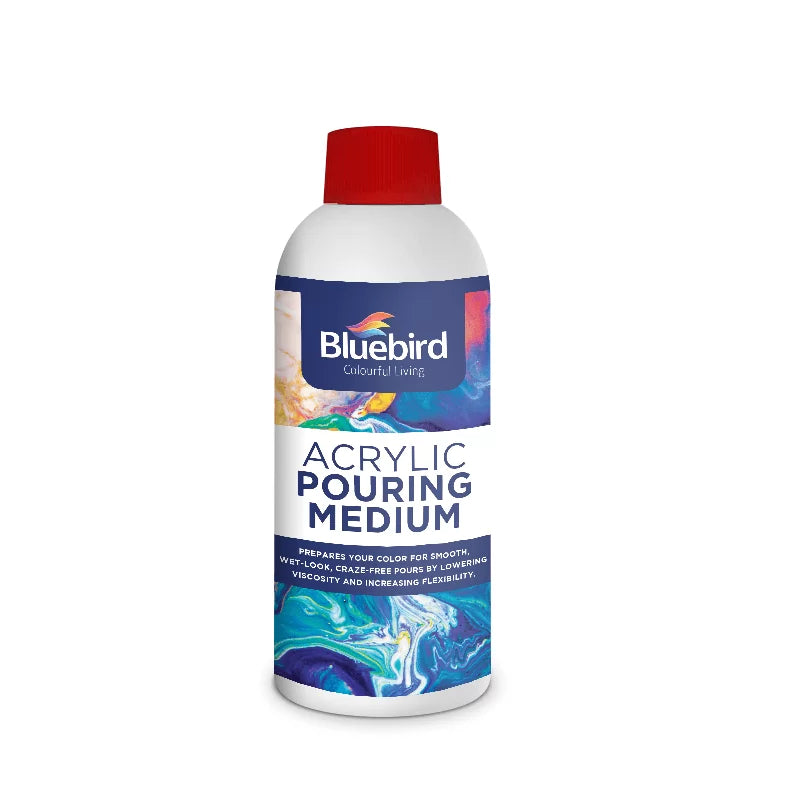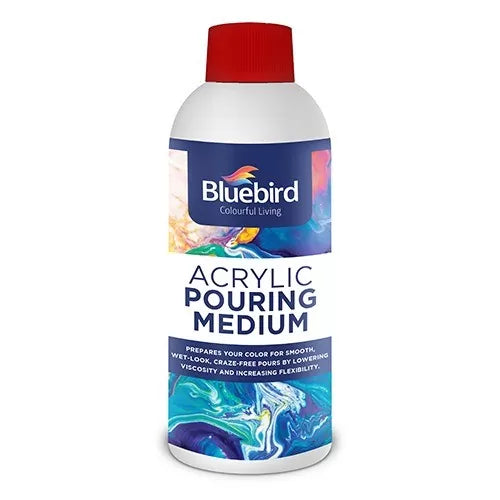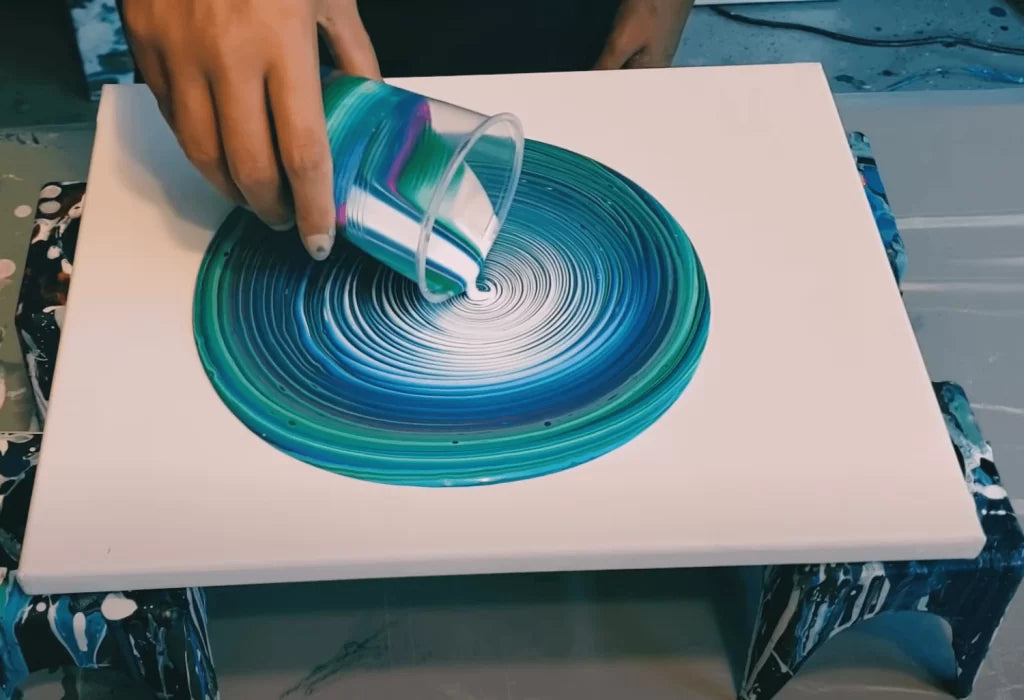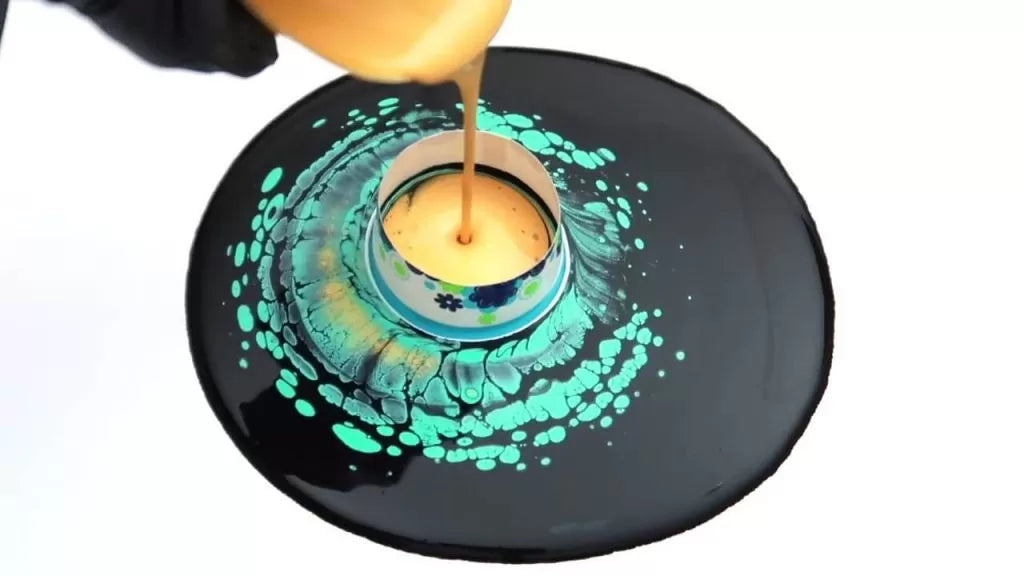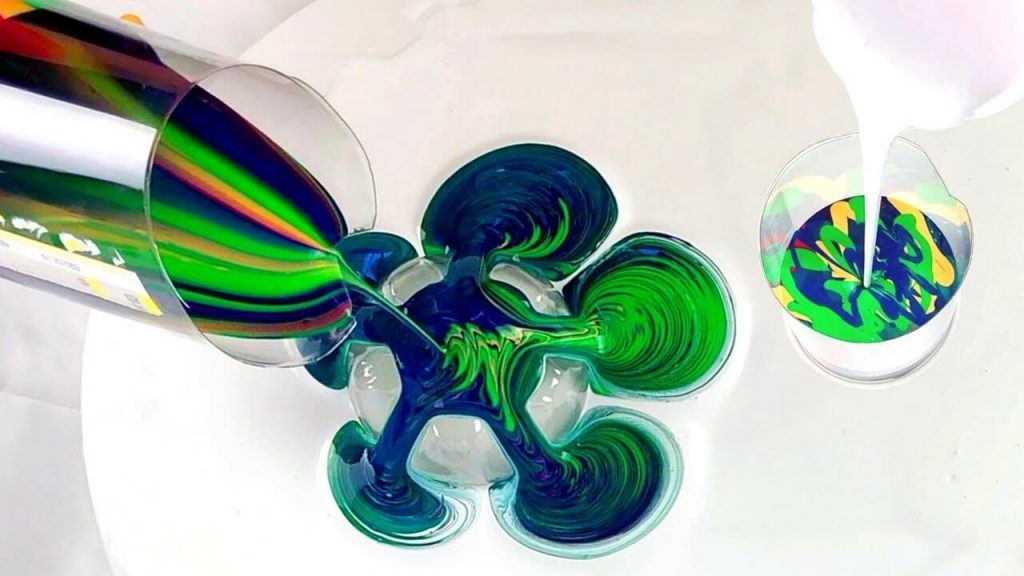1
/
of
6
Bluebird - Acrylic Pouring Medium - Wet-look,Craze free
Bluebird - Acrylic Pouring Medium - Wet-look,Craze free
Regular price
Rs.299
Regular price
Sale price
Rs.299
Unit price
/
per
Couldn't load pickup availability
Acrylic Pouring Medium
Prepare your color for smooth, wet-look, craze-free pours by lowering viscosity and increasing flexibility.
- Gives even poured puddles and acrylic skins
- Requires mixing with water (upto 20%) before application.
- Results in a smooth surface, with no crazing, cracking or bubbles
- Dries to a high gloss, wet-look finish
- Lowers viscosity of heavier body paints, giving increased flow
- Extends your color further without affecting acrylic stability
- Maintains color opacity
- Maintains paint adhesion, durability and archival quality
- Do not shake or vigorously over-stir as this can impact the smooth appearance when dry
- Do not use with any non-acrylic media
use?
Bluebird Pouring medium is ready to use however with repeated use, it’s consistency will get thicker (due to contact with air) and that’s when we recommend max 20% water dilution. Acrylics to pouring medium ratio is 80% pouring medium to 20% acrylics. If mixing with water, do it before and then mix with acrylic colours.
Pouring Techniques
1. Ring Pour (Dirty Pour)
This is an acrylic pouring technique in which all colors are poured into the same cup or container and then poured onto the painting surface.
- Each color is mixed individually, together with the pouring medium and water. The ratio is approx. 1:1:<1. For better cell formation, two to three drops of silicone oil can be added per color.
- The color mixtures are then stacked on top of each other in a container.
- Maybe stir just a little bit
- Then the contents of the container are carefully poured over the painting surface.
- The painting ground is moved back and forth until the paint has spread over the painting ground and the result corresponds to the ideas.
2. Flip Cup
The Flip Cup technique is identical to Dirty Pouring, but the container with the paint is put on the painting surface and lifted up, so that the individual layers of paint lay more on top of each other.
- All colors are mixed separately, together with the pouring medium and water. The ratio is approx. 1:1:<1. For better cell formation, two to three drops of silicone oil can be added per color.
- The color mixtures are then stacked on top of each other in a container.
- The container is then placed vertically on the painting surface.
- The container is then carefully lifted up.
- If more cells are desired, a flame torch can be used to briefly swivel over the color.
- The
Tell Others about this

